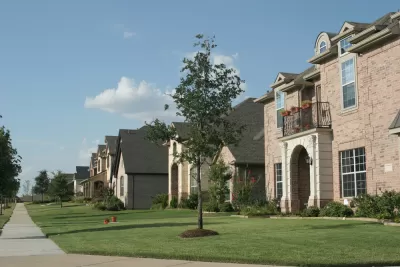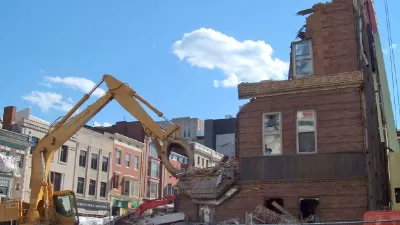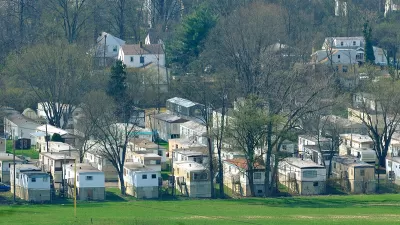Demolitions in residential neighborhoods have increased quickly in Austin, as property owners upgrade their homes to contemporary layouts. Community Impact newspaper investigates the trend.

"Under the economic pressure of Austin’s rapid growth, the traditional housing stock in the city’s central neighborhoods is crumbling to bulldozers and wrecking balls at an accelerated rate," according to an article by Christopher Neely.
Neely is reporting an analysis by the Community Impact Newspaper, which found that 1,773 demolitions of residential properties occurred between 2010 and 2017. "By comparison, 1,900 similar demolitions occurred between 1980 and 2009," according to Neely. Demolitions tend to replace smaller homes with larger ones. Included in the article are quotes attributed to Austin Councilmember Kathie Tovo, who describes the demolitions as a "terrible trend." The policy and political landscape of the city, however, makes slowing the pace of demolitions very difficult, according to the article.
Supplementing Neely's explanation of the study is an interactive map illustrating the demolition data.
FULL STORY: 7 years’ worth of Central Austin home demolitions on track to exceed numbers for the previous 30

Study: Maui’s Plan to Convert Vacation Rentals to Long-Term Housing Could Cause Nearly $1 Billion Economic Loss
The plan would reduce visitor accommodation by 25,% resulting in 1,900 jobs lost.

North Texas Transit Leaders Tout Benefits of TOD for Growing Region
At a summit focused on transit-oriented development, policymakers discussed how North Texas’ expanded light rail system can serve as a tool for economic growth.

Why Should We Subsidize Public Transportation?
Many public transit agencies face financial stress due to rising costs, declining fare revenue, and declining subsidies. Transit advocates must provide a strong business case for increasing public transit funding.

How to Make US Trains Faster
Changes to boarding platforms and a switch to electric trains could improve U.S. passenger rail service without the added cost of high-speed rail.

Columbia’s Revitalized ‘Loop’ Is a Hub for Local Entrepreneurs
A focus on small businesses is helping a commercial corridor in Columbia, Missouri thrive.

Invasive Insect Threatens Minnesota’s Ash Forests
The Emerald Ash Borer is a rapidly spreading invasive pest threatening Minnesota’s ash trees, and homeowners are encouraged to plant diverse replacement species, avoid moving ash firewood, and monitor for signs of infestation.
Urban Design for Planners 1: Software Tools
This six-course series explores essential urban design concepts using open source software and equips planners with the tools they need to participate fully in the urban design process.
Planning for Universal Design
Learn the tools for implementing Universal Design in planning regulations.
City of Santa Clarita
Ascent Environmental
Institute for Housing and Urban Development Studies (IHS)
City of Grandview
Harvard GSD Executive Education
Toledo-Lucas County Plan Commissions
Salt Lake City
NYU Wagner Graduate School of Public Service





























